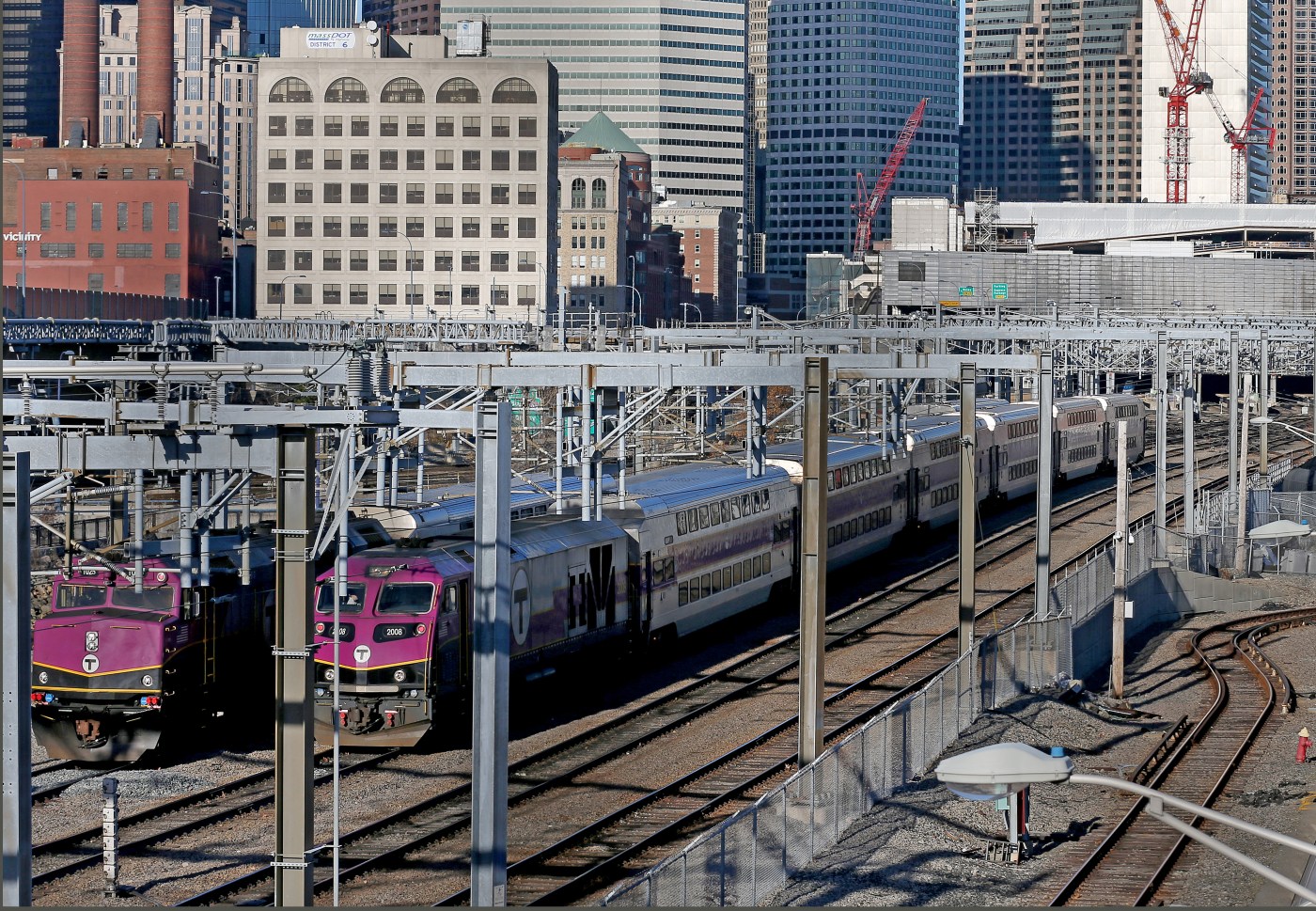
Lawmakers pushing for MBTA Commuter Rail electrification by 2035
State lawmakers are pushing new legislation that would finally set deadlines for electrifying the Commuter Rail, four years after the MBTA committed to the project.
Much of the testimony at a roughly four-hour Joint Committee on Transportation hearing Monday focused on the proposed bill, which would require electrification of the entire Commuter Rail system by Dec. 31, 2035.
Electrification of three lines that serve “environmental justice populations” — Fairmount from South Station to Readville, Newburyport/Rockport from North Station to Beverly and the entire Providence/Stoughton Line — would occur first, by Dec. 31, 2024, the bill states.
“From our end, there is no policy in place right now that sets deadlines for this; there’s nothing in the statute,” state Sen. Brendan Crighton, who filed the Senate version of the bill and co-chairs the joint committee, told the Herald.
“I think that this administration has put a lot more focus on electrifying rail so I’m confident they’re doing a lot of these things already. But I think deadlines are important when we’re dealing with an issue as urgent as this,” he added.
Crighton put forward similar legislation last session, but the deadlines for Commuter Rail electrification, included as amendments for a climate bill that passed, “did not come out in conference committee,” he said.
He, along with state Reps. Steven Owens and Jennifer Armini, refiled the deadlines as Senate and House bills this session “with the hopes of passing it to law,” Crighton said.
The bills also dictate that the MBTA and its Commuter Rail operator, Keolis, must ensure that zero-emission infrastructure is in place to meet the deadlines for electrification.
Related Articles
There is light at the end of the tunnel, MBTA’s General Manager says
MBTA says Commuter Rail ridership hit pre-pandemic peak of 90%
Editorial: MBTA fixes rival cost of Big Dig
Massachusetts ‘stuck in neutral’ on addressing transportation woes: Poll
MBTA Police chief says new contract raises will boost competitiveness
The three “environmental justice” lines were also prioritized for early electrification by the MBTA Fiscal and Management Control Board in November 2019, but until this year, there had not been much movement since that vote.
Crighton, in addition to crediting the Healey administration for putting more of an emphasis on the project, pointed to the MBTA’s efforts to prioritize Commuter Rail electrification in the fiscal year 2024-28 Capital Investment Plan.
The plan does not lay out the estimated cost for electrification, and discussion at the day’s committee hearing did not pinpoint a solid number, which Crighton said would be dependent on “a lot of variables,” such as replacing existing diesel locomotives, inflation, and the cost of construction.
Last January, his office estimated that electrifying the Stoughton, Fairmount, and entirety of the Newburyport/Rockport lines would cost roughly $493 million, based on inflation-adjusted Amtrak electrification costs.
That figure did not include the cost of new “zero-emission” trains, which, according to the bill, include “electric multiple units, electric battery chargers, trolleybus and railway catenary wire, and other equipment to support the operation of electric vehicles.”
An MBTA board presentation in June 2022 pointed to the agency favoring a lower-cost hybrid approach, where overhead catenary lines would charge battery-electric trains while moving so they can move offline and in tunnels over bridges, where it was deemed to be too expensive to install wiring.
In their testimony, Owens and Armini both discussed the harmful effects of diesel train emissions in today’s Commuter Rail system.
This air pollution, Owens said, triggers asthma attacks, worsens heart conditions, has been linked to lung cancer in children, and impacts residents of color in Massachusetts at a “26-36%” higher rate than what white residents are exposed to.
The bill seeks to tackle those disparities by ensuring that Commuter Rail lines in so-called environmental justice communities, which have a high population of minorities and non-English speakers and a low median income, are electrified first, Owens said.
“The difference between a dream and a goal is a deadline,” Armini said. “This bill gives the Legislature the opportunity to express a much-needed sense of urgency. It gives us the chance to right historic wrongs and to clean the air currently endangering the health of the next generation.”


